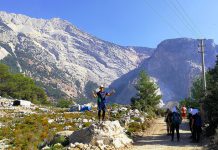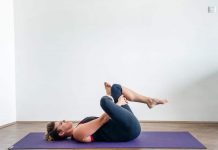Here is a good question for all the road runners out there: “Should you incorporate trail running into your weekly running routine?”
In my professional opinion, the answer is “yes”, but it should be limited to 15-20% of your weekly mileage. In this article, I will explain the rationale behind this.
As a running coach, I witness many different examples of running technique. It is probably true that all running coaches have in their minds a similar view of what constitutes the perfect running form for a road runner; a cadence of 180-184, minimal vertical oscillation (up and down movement of the body), arms oscillating perfectly by the side of the torso in a forward and back motion with no lateral movement, etc.
However, there will always be runners who are extremely successful with a style that goes completely against the grain of what is regarded by industry professionals as ‘correct form’.
US Running World editor Peter Vigneronargues that form does not matter as much as coaches may think, however, there is one aspect of running technique that I believe the majority of coaches will unanimously agree upon, namely the head position of the road runner. Dr. Nicholas Romanov, the developer of the Pose Method®, argues that the ‘head position is a crucial point in making the muscular system of the whole body engage(d) in a specific way’. I will come back to this point later on in my article.
Many will consider that trail running is more effective than road running for strengthening muscles in the feet and ankles, as well as the supporting muscles of the abductors and adductors – these are the muscles that I like to refer to as the ‘scaffolding’ for your legs.
Located down the sides of your legs, the abductors take the leg away from your body – hence the term ‘abduct’ – to take away, and the adductors bring the leg back towards the body. When our legs get tired on long and/or high intensity runs, the abductors and adductors are the muscles that support the primary leg muscles.

Does it make sense therefore for a road runner to do as much trail running as possible? ‘No’ is the simple answer to that. If you are training for a certain type of race, then the conditions with which you train should simulate the conditions of the race as closely as possible. That is to say, if you are training for a flat road race, then the majority of your running should be on flat roads.
However, note that we say majority and not entirety. As an example, within the training plans of The Running Plan, we generally incorporate hill training into the early part of our training programmes in order to help the runner increase leg strength, even when training for a flat road race.
In the same way, incorporating trail running into a road running training programme is a great means of helping strengthen the supporting leg muscles, but I stress again that only doing this for a maximum of 15-20% of your total weekly mileage. For example, if you are running 50km per week, then I would encourage you to run between 7-10km of this mileage on trails. The reason for limiting this goes back to the point about head position, and to some extent also, arm position.
A trail runner is normally required to look 5-10 metres ahead when running on a trail, in order to competently judge the route and where to step without hazard or risk. A trail runner will also generally have their arms slightly wider, than a road runner, in order to increase balance.
It is important to remember that one of the main principles of training is to stress the body via the training activity, from which it learns to adapt and be more efficient at that activity. If a road runner practices too much trail running therefore, then their running form will eventually adapt, which can result in inefficiency when running on the road – the head will drop, forcing the shoulders to curve inwards, and pushing the arms too wide.
Another useful aspect of trail running, to all runners, is that it forces us to utilize different breathing patterns when running, due to the unpredictability of the terrain. Arguably, this may even prevent injury, since it is almost impossible to exhale on the same side of the body when trail running. Many road runners do this, without knowledge of it, which can for some, put pressure on one side of the body. The same point can be extended about cadence, where again trail running forces the runner to mix up their running cadence, which is useful from time to time.
In conclusion, if your preference is road running, then do include some trail running within your training, but limit it to the 15-20% mileage rule. By doing this you will reap the benefits of strengthening your feet, ankles and supporting leg muscles, yet you will avoid the potential pitfalls of altering your running technique.
About The Author

Mark Williams is Director and Co-founder (with Jeffrey Ross) of The Running Plan – www.therunningplan.com, the Malaysian-based running training plan experts.
Visit their website for more information on trail and road training plans, or email contact@therunningplan.com. Learn from the best!





























































































